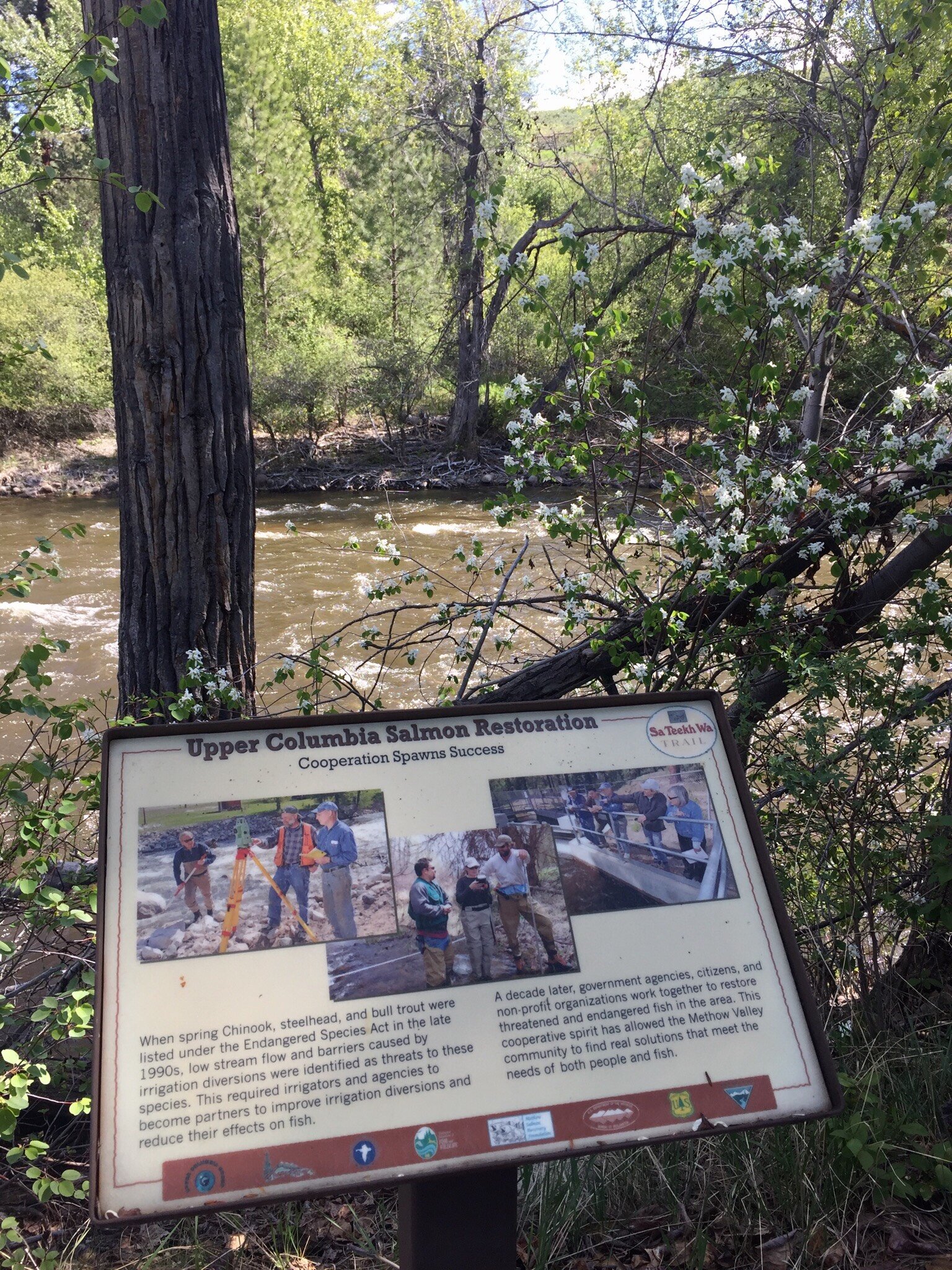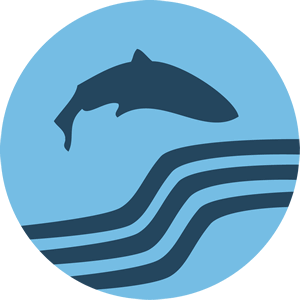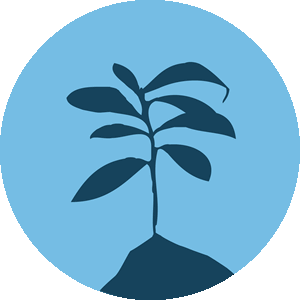Explore a Habitat Project
Twisp Ponds
Once slated for residential development, the Twisp Ponds now offers visitors the opportunity to explore an active habitat restoration project. A series of walking trails meander around ponds, through a mature cottonwood forest, and past young stands of cottonwood saplings planted by local school kids. Visitors interested in learning more about salmon recovery activities in the Methow watershed can refer to the onsite trail guide for more details.
A collection of art pieces has been commissioned and installed along the trail to raise public awareness of watershed function, habitat restoration, and fish recovery efforts in the Methow.
A collection of species specific bird boxes by Nice Nests are situated throughout the site. Boxes installed along the open field on the west side of the Twisp Ponds are home to tree and violet-green swallows and western bluebirds, while black-capped chickadees and nuthatches inhabit the houses in the wooded areas. Larger boxes on the property house saw-whet and screech owls, and a pair of kestrels is believed to be using the large box on the utility pole in the west meadow. Four of the largest boxes facing the ponds are targeted at cavity-nesting waterfowl, including wood duck, buffleheads, and hooded and common mergansers.
The Twisp Ponds Trail is located ½ mile west of Twisp on the Twisp River Road. An osprey sculpture along the highway marks the entrance to this site.
Young students transform a fallen cottonwood tree into a playground at the Twisp Ponds
Cottonwood Trail
Students read about Methow Salmon’s riparian planting projects at Cottonwood Trail. These students are active participants in these planting efforts.
The Cottonwood Trail is on public land managed by the Washington Department of Fish and Wildlife. The trail traverses an abandoned agriculture field that is undergoing restoration efforts and connects to the Methow River via a cottonwood forest. Interpretive signs detailing the importance of cottonwood trees to local culture and restoration efforts are located along the trail. The trail also showcases a habitat project that was completed in 2013. Methow Salmon removed an unneeded levee along the river to reconnect the adjacent floodplain. This means that during periods of high water the river has a place to expand and the dissipate energy. Engineered wood structures were added in the main river channel and side channel to add habitat complexity.
The Cottonwood Trail site serves as an outdoor classroom for the Watershed Watchers. This program connects local scientists and ecologists with the Methow Valley school district to teach kids about riparian and stream ecology in an outdoor setting.
The Cottonwood Trail is halfway between Twisp and Winthrop on the Old Twisp Highway.
Sa Teekh Wa Trail
Cooperation between agencies and a local irrigation company spawns success at the Fulton Dam Project.
Easily accessed from downtown Winthrop via the pedestrian bridge, the Sa Teekh Wa interpretive trail provides visitors with an opportunity to see an operating irrigation diversion system. The path parallels an irrigation ditch to a fish screen and fish return. These structures prevent fish from entering the irrigation ditch and facilitate their safe return to the river. The trail culminates at an irrigation diversion. Historically, a diversion dam at this location hindered fish passage up the Chewuch River. The Bureau of Reclamation worked with the Fulton Ditch Company to design a roughened stream channel that would have the overall physical appearance of a natural streambed, improve fish passage and meet the water delivery needs of the ditch. Methow Salmon has installed a series of interpretive signs along the trail describing the history of the Methow Valley’s indigenous people and the 1800’s lumber mill, as well as current irrigation structures and salmon recovery actions.
“Public access promotes community connection to our riparian landscapes.”







